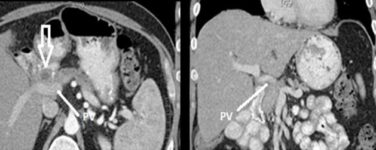FROM MMWR
A woman in Monrovia, Liberia, likely contracted the Ebola virus through sexual contact with a survivor whose semen tested positive 199 days after his Ebola onset, according to a Morbidity and Mortality Weekly Report early release (MMWR Morb. Mortal. Wkly. Rep. 2015 May 1;64:1-3).
It isn’t possible to “definitively ascribe” the woman’s infection to sexual contact, however. “The investigation identified only one epidemiologic link to Ebola: unprotected vaginal intercourse with a survivor,” the report from the Centers for Disease Control and Prevention stated.
Ebola virus is known to persist in seminal fluid following recovery, but the duration of viral shedding and the likelihood of transmission are unknown.
The virus has been isolated from semen as long as 82 days after symptom onset, and semen can be positive by reverse transcription-polymerase chain reaction (RT-PCR), indicating presence of viral RNA, up to 101 days after onset.
The Monrovian woman reported unprotected vaginal intercourse on March 7, 2015, with the male Ebola survivor and developed symptoms of headache, weakness, joint pain, and nausea on March 14.
A diagnosis of Ebola virus was confirmed March 20, 2015, 30 days after the most recent confirmed Ebola patient in Liberia. Ebola viral RNA sequenced from three patients in Liberia’s last known cluster of epidemiologically linked cases did not share mutations observed in the woman’s isolate, making it unlikely that she was infected from unrecognized, ongoing community transmission, authorities said.
Investigations of several other recent Ebola cases in West Africa also have suggested sexual transmission from survivors, but CDC officials said that they have not been confirmed.
“Based on information gathered in this investigation, CDC now recommends that contact with semen from male Ebola survivors should be avoided until more information regarding the duration and infectiousness of viral shedding in body fluids is known,” the report stated. “If male survivors have sex (oral, vaginal, or anal), a condom should be used correctly and consistently every time.”
Officials also recommended that used condoms be handled and disposed of safely to avoid contact with semen.
The male Ebola survivor was admitted to an Ebola treatment unit on Sept. 23, 2014, and had multiple family members with confirmed or suspected Ebola at that time. His first test by RT-PCR was indeterminate: positive on one assay with a cycle threshold of 40, indicating a low viral load, and negative on a second assay. A second RT-PCR test in October 2014 was negative.
Complete genome sequencing of viral RNA from his semen has not been possible because of the low level of detectable viral nucleic acid, but a partial sequence obtained so far closely matches the sequence from the Monrovian woman, CDC officials said.
The male Ebola survivor reported having unprotected vaginal intercourse with another woman around the same time as the Monrovian woman, but so far her blood has tested negative for Ebola.
RT-PCR testing of semen might be a useful tool for assessing and counseling male survivors on measures they should take to prevent Ebola transmission. The CDC and other public health partners are reviewing existing data to determine the validity and feasibility of potential recommendations.
The CDC and the World Health Organization have previously recommended abstinence or condom use for 3 months following recovery from Ebola virus infection.
“Sufficient supplies of condoms and counseling to promote their correct and consistent use should be provided as part of the response in Ebola-affected countries,” CDC officials suggested. “In addition, efforts should be undertaken to prevent the possibility of sexual transmission from stigmatizing survivors.”
On Twitter @pwendl




